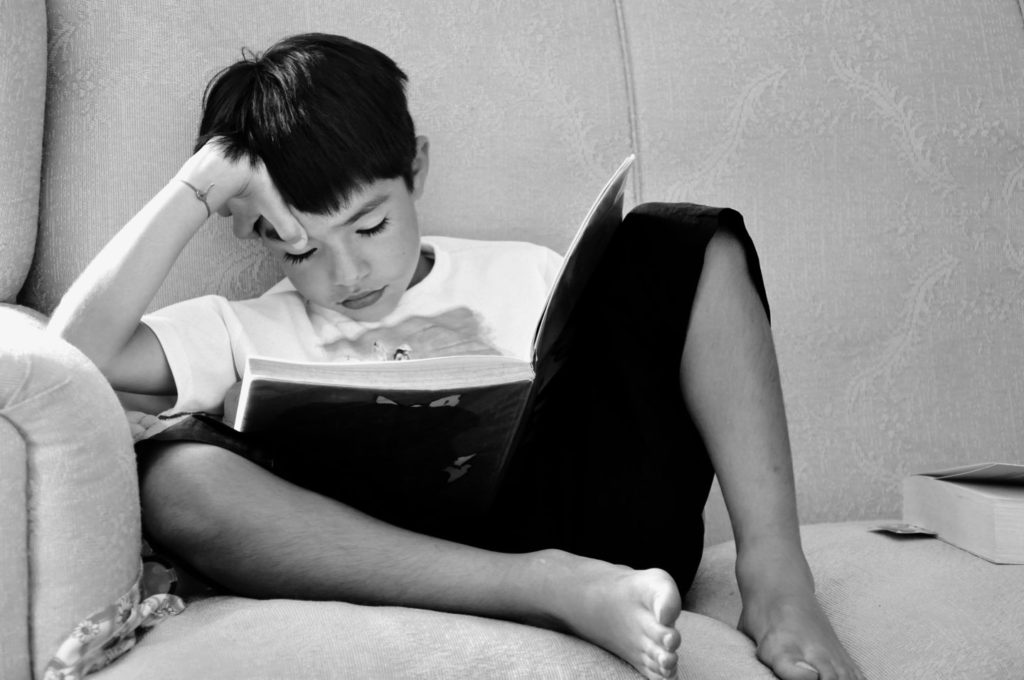Why Pushing your Struggling Student Doesn't Usually Work
Michael Jones, a senior tutor at College Tutors of Central Indiana, writes about the importance of learning styles, and how a student’s particular learning style, along with environment and study habits, can make a significant impact on academic performance. While one instructor’s style of teaching works for some students, it won’t be effective for other students. Recognizing this, and understanding the student’s learning style are the first steps towards achieving academic goals. Instruction and guidance with the right learning style, along with the right environment and good study habits, can make all the difference!…

Why do students struggle and how can study skills be improved?
by Michael Jones
Learning Styles
To address this question, I’d like to start with the idea of personal learning styles and the personalized help that many require.
 Everyone learns in different ways. There exists array of possible styles of learning. Every person has their own preferences and learns best in different environments. In a school environment the goal is to teach as many students as possible at a time, but this leaves some feeling left behind when the methods being used to teach them are outside of their preferred learning styles. Most people will have a dominant learning style, something that I have noticed especially in high school mathematics. Students with a preference toward visual learning over logical learning will shine in a geometry class in which most problems are presented visually with pictures and 3-dimensional representations, but will struggle with algebra. On the other hand, students who prefer the logical learning style of pattern recognition and making obscure connections will have a better time in algebra and calculus, but may struggle in the more visual aspects of geometry or trigonometry. If a student is able to identify their own learning preference (normally a mix of several styles on a case-by-case basis, but sometimes a heavy preference towards only one) then they have taken an important step towards improving their own study skills.
Everyone learns in different ways. There exists array of possible styles of learning. Every person has their own preferences and learns best in different environments. In a school environment the goal is to teach as many students as possible at a time, but this leaves some feeling left behind when the methods being used to teach them are outside of their preferred learning styles. Most people will have a dominant learning style, something that I have noticed especially in high school mathematics. Students with a preference toward visual learning over logical learning will shine in a geometry class in which most problems are presented visually with pictures and 3-dimensional representations, but will struggle with algebra. On the other hand, students who prefer the logical learning style of pattern recognition and making obscure connections will have a better time in algebra and calculus, but may struggle in the more visual aspects of geometry or trigonometry. If a student is able to identify their own learning preference (normally a mix of several styles on a case-by-case basis, but sometimes a heavy preference towards only one) then they have taken an important step towards improving their own study skills.
See a graphical representation of Learning Styles at www.learning-styles-online.com/
There is also the matter of environment. Some people prefer to learn by talking with their teachers and peers, while others prefer to puzzle away on their own and guide their own study. While this is an area where most people have a distinct preference, I believe that a healthy mix of both is necessary to truly grasp a difficult topic. Comfort is an important element in being mentally fit to study, but it also helpful to be able to share your ideas with others and receive feedback in the case of a solitary learner, or for a social learner to be able to take time to consider what they’ve learned for as long as they need. Though I think that perhaps the solitary learners are at the worst risk of falling behind if they don’t understand something due to their unwillingness to ask others for help.
The advantage of receiving one-on-one help with a topic you’ve been struggling with is that you can receive help that is tailored to you. The best teachers can teach to any style of learner, but in a large group there simply isn’t the time to make sure that everyone gets what they need.
 Teachers as much as students have their preferred learning styles as well though. In a long-term tutoring environment, I believe that the most can be accomplished when students are paired with tutors who are equipped to cater to their specific style. I will continue to use math as an example, because it’s what I know best. It would likely do very little good to try to teach a verbal learner Algebra by drawing graphs for them or showing them the same type of problem over and over until they understand all the patterns. This may work eventually, but a verbal learner would prefer to have a list of steps and mnemonic devices to remember them.
Teachers as much as students have their preferred learning styles as well though. In a long-term tutoring environment, I believe that the most can be accomplished when students are paired with tutors who are equipped to cater to their specific style. I will continue to use math as an example, because it’s what I know best. It would likely do very little good to try to teach a verbal learner Algebra by drawing graphs for them or showing them the same type of problem over and over until they understand all the patterns. This may work eventually, but a verbal learner would prefer to have a list of steps and mnemonic devices to remember them.
It is the case that some learning styles lend themselves better to different subjects though and developing different learning styles can be beneficial. For example, it may be a significant struggle to find a comfortable way to teach a physical learner about grammar and literary analysis. In these cases the more difficult task of teaching the student to develop their verbal learning skills becomes necessary. Translation is no longer possible, and a new language is required. Many students will just believe that they are incapable of learning the subject and give up if they don’t receive the proper guidance.
Proper Study Environment
 Aside from these conflicts between learning styles, an environment conducive to focus and study can also be an issue. If a student does not have a place where they can study and learn in peace and away from distraction there can be detrimental effects on grades and study habits. These issues can lead to more problems with self-esteem and motivation, causing the student to eventually lose the will to push themselves to continue to learn. These problems, if present, can be addressed by providing a safe, quiet study environment outside of personal tutoring hours. I don’t think the importance of this can overstated. The problem isn’t limited to students with a troubled home life either. Well-off students can run into the problem of too much distraction at home, causing just as many issues with motivation.
Aside from these conflicts between learning styles, an environment conducive to focus and study can also be an issue. If a student does not have a place where they can study and learn in peace and away from distraction there can be detrimental effects on grades and study habits. These issues can lead to more problems with self-esteem and motivation, causing the student to eventually lose the will to push themselves to continue to learn. These problems, if present, can be addressed by providing a safe, quiet study environment outside of personal tutoring hours. I don’t think the importance of this can overstated. The problem isn’t limited to students with a troubled home life either. Well-off students can run into the problem of too much distraction at home, causing just as many issues with motivation.
Proper Study Habits (and the importance of breaks)
Either outside of the two issues I’ve already discussed or in conjunction with them, some students don’t implement proper study habits. This leads to frustration and time-wasting, both of which eventually can lead to that lack of motivation. There are many ways to improve your study habits, but I believe that the most important is knowing when and how to give yourself breaks.
 Most students can’t focus at 100% for a long, uninterrupted stretch of time. Proper breaks need to be implemented to avoid this burnout. Mental fatigue can set in quickly and should not be ignored. If a student tries to push themselves to work on homework and study nonstop for hours, the amount of learning that actually occurs drops drastically. Mental faculties slow down as well, and pushing through may even cause the task to take longer than if they had taken regular 5-10 minute breaks involving movement or something stimulating. Allowing the brain to rest regularly has also been shown to improve comprehension and retention of material as well. Personally, I find music or a short game to be the best ways for me to recover and return fresh, but everyone’s needs are different.
Most students can’t focus at 100% for a long, uninterrupted stretch of time. Proper breaks need to be implemented to avoid this burnout. Mental fatigue can set in quickly and should not be ignored. If a student tries to push themselves to work on homework and study nonstop for hours, the amount of learning that actually occurs drops drastically. Mental faculties slow down as well, and pushing through may even cause the task to take longer than if they had taken regular 5-10 minute breaks involving movement or something stimulating. Allowing the brain to rest regularly has also been shown to improve comprehension and retention of material as well. Personally, I find music or a short game to be the best ways for me to recover and return fresh, but everyone’s needs are different.
Learn more about College Tutors/Spark Learning
Success and Self-Confidence through:
Planning

Assessment

Responsibility

Knowledge


